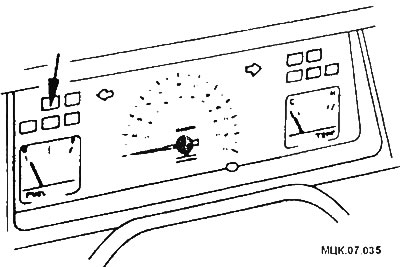Self-diagnosis function
The electronic control unit has a self-diagnostic capability, in which the electronic control module constantly checks the signals from some sensors and actuators (drives) motor and compares each signal with pre-programmed values. If the diagnostic software detects a malfunction, the electronic control module stores one or more trouble codes. Codes will not be stored for those parts for which there are no codes or under conditions that are not provided by the diagnostic software. The self-diagnostic systems generate 2-digit trouble codes to be read manually or with an appropriate trouble code reader.
Limited mode
The self-diagnostic systems covered in this chapter include a reduced operation mode function (often referred to as emergency). When a specific fault is identified (not all faults cause the start of the reduced operation mode), the electronic control module starts the emergency mode and refers to the programmed values of the individual values, and not to the signal from the sensor. This allows the car to safely drive to the place of diagnosis / repair. When the fault is cleared, the electronic control module will return to normal operation.
Ability to adapt or «learning»
These vehicles' systems also use an adaptive function that modifies basic programmed values to work most efficiently under normal conditions and to compensate for wear on engine parts.
Self-diagnosis indicator lamp
Some models have a self-diagnostic indicator lamp located on the instrument panel (arrow).

Typical Pilot Light Location
